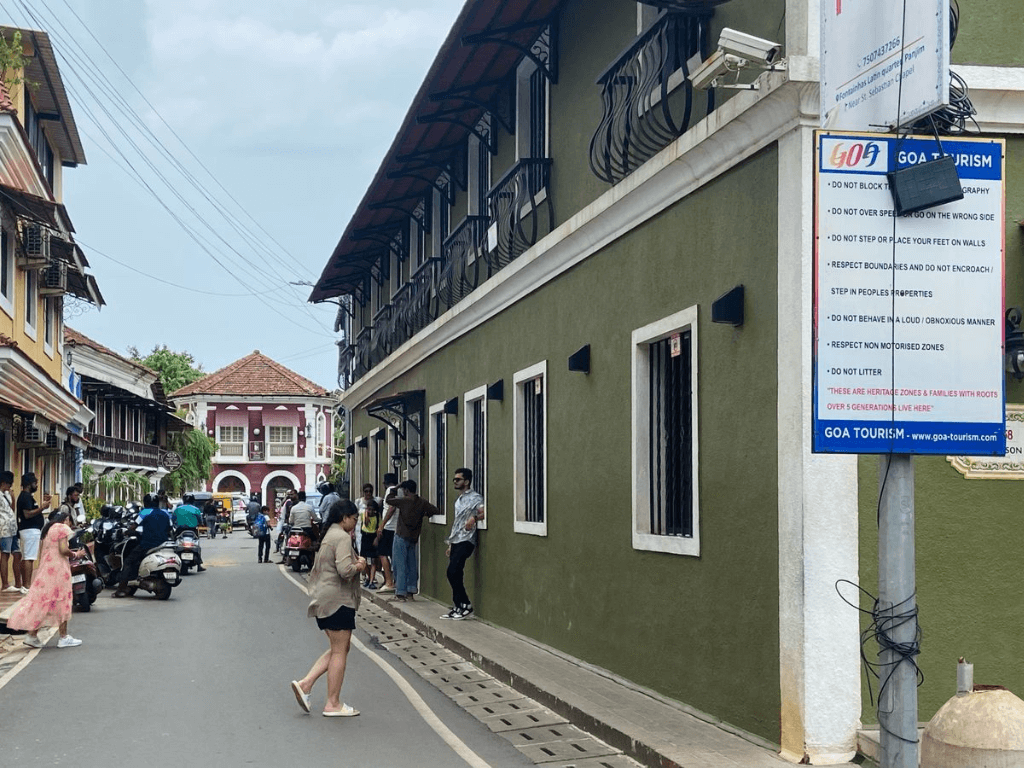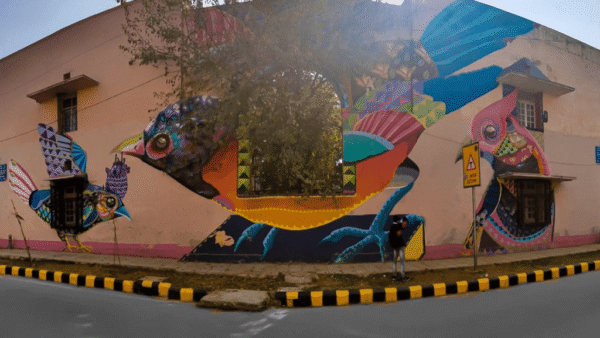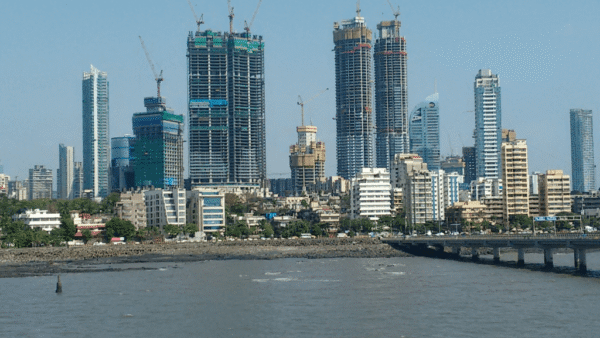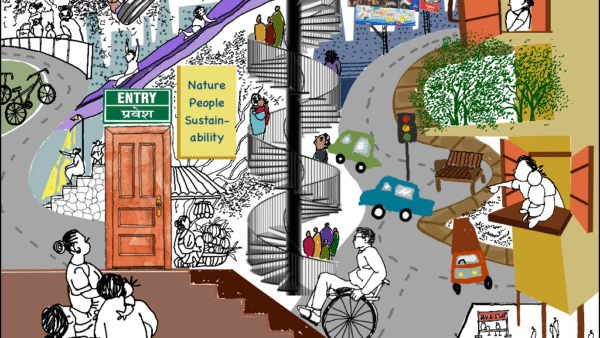Flanked by the Ourem Creek in the east and Altinho hills in the west, the old Latin quarter of Panaji, Goa, is a natural attraction for tourists. Its two heritage wards, São Tomé and Fontainhas, carry an old-world European charm seamlessly merging with Goan influences. Fontainhas has been recognised by UNESCO as a significant heritage site for its distinct Portuguese-influenced design and vibrant architecture. This quaint quarter has tourists walking in the morning and evening, taking in the colourful houses and winding lanes, pausing to shoot pictures and make reels for social media, some even trespassing into gardens of private homes.
In a rare move of pushing back on tourists, who mean economic gain, residents of Fontainhas showed in late 2024 that tourists were not welcome in their home precinct. In São Tomé, residents, many of them senior citizens who found the tourists intrusive, got into a faceoff last year.[1] Whether curious and respectful tourists or boisterous and impolite ones, there’s now frustration – even anger – replacing the Goan bonhomie. Residents in both places say they have had enough of their homes being gawked at and photographs taken.
Mindful of the fact that such pushback could hurt the state’s tourism-dependent economy, Goa Tourism authority issued a set of instructions for tourists in Fontainhas to not block the streets, not litter, not place feet on walls and other private property, to respect privacy and drive on one side. However, as locals told Gomantak Times[2], instructions without penalties are meaningless.
The pushback is not limited to the colourful heritage parts of Panaji but seems to be touching other parts of Goa where residents have begun to feel like “unwanted guests” in their own space. And other favourite tourism spots in India are beginning to see the pushback too. In many cases, tourists far outnumber residents putting a strain on resources such as water and electricity, disrupting local life, and leaving behind a trail of waste from food to plastic that the towns are not equipped to handle.
From Pondicherry to popular hill stations like Shimla and Ooty, and religious towns or gateways to pilgrimage centres like Joshimath which saw land subsidence in 2022, towns are beginning to pay attention. There’s a recognition of the significance of tourism to the local economy. They are not yet saying “no more tourists” but have begun to express their annoyance as tourism intrudes into everyday lives. In Coorg, a favourite destination, locals complained of inadequate water. “Homestays and resorts are putting immense pressure on water resources…The region has droughts, which have been exacerbated by the tourism boom,” Ankita Nanda, who runs a small coffee farm in the area, told the media.[3]
But Goa, especially Fontainhas, has caught the headlines.
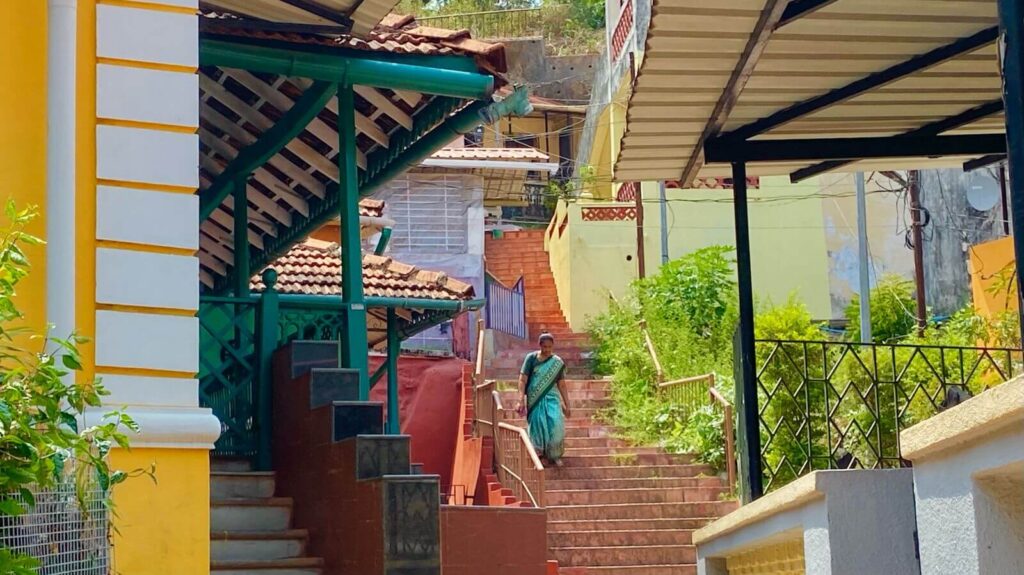
Photo: Charles Correa Foundation
Fontainhas is not sorry
Unorganised tourism that includes walks in the area, disruptive and loud behaviour of tourists, disregarding privacy and causing general disturbance including to senior citizens are part of the package that residents of Fontainhas and São Tomé do not want. The post-pandemic years saw a marked rise in tourists traversing the lanes loudly, shooting in front of homes, some forcing themselves into gardens, as this report showed.[4]
“Residents used to be welcoming and cordial earlier, but now the general temperament is hostile. Tourists today cross the threshold of many private residences, invade privacy, and damage the property as well,” said Ashmita Gupta, 26, from the Charles Correa Foundation to Question of Cities. The Foundation, named after the famous architect and planner, has been housed in Fontainhas since 2011.
Locals told us that tourists “dirty our walls and we are forced to spend money on maintenance or repairs, they linger on the streets and don’t allow residents to move freely”. A grocery shopkeeper in Fontainhas termed most tourists as “mannerless and ill-behaved” and spoke of how locals have been relocating away from the area. His house, more than a century old, is a draw for tourists and he does not like the intrusion.
In São Tomé too, as Chryselle D’Silva Dias, a resident and writer, said that tourist behaviour gives locals constant anxiety. “After the lockdown, we’ve seen a 100-200 percent increase in tourism and tourist referrals. These are not tourists who just walk past our houses and admire the old architecture. These are disruptive people. I remember two with speakers and microphones, one early morning, dancing in the streets to make videos. For the Latin Quarter, especially old people, it is extremely disruptive.”
She wrote about it here.
D’silva Dias says Panaji has city tourists and casino tourists; the latter are those who park their cars in the narrow streets, visit casinos, return in the dead of the night and disturb the neighbourhood. The utter disregard for privacy and decency has made some locals put their peace over profits from tourism. Before the government could take action, they put up signs and boards outside their homes and churches asking tourists to be respectful.
Despite this, tensions prevail. Aloo Gomez Pereira got into an altercation with tourists shooting videos outside his brightly coloured home in October last year though it bears a sign ‘No Photography Allowed’.[5] In 2023, a representative from every home in São Tomé signed a petition to prohibit photography of their homes and the Panaji Corporation passed a resolution to that effect, acknowledging its disruptive nature.[6] Apart from the public nuisance, ecology has come under threat too. Recently the last Palash tree in São Tomé, in front of Joseph Bar, was cut down while the Conceicao Hill behind the Church of Immaculate Conception and the mangroves in Ourem Creek are cleared for construction projects.
While the infamous taxi “mafia” in Goa and over-priced hotels are one side of the equation, local resistance to tourists – though small – projects an unwelcome side to the state. Yet, the tourist inflow this January-March quarter increased by 10.5 percent over the previous year same time, according to IBEF.[7] The pushback has not reached the proportions it did in Barcelona recently where protesting locals turned violent against tourists[8] or the successful pushback in Venice where locals managed to force US tech billionaire Jeff Bezos to move his wedding celebration to another location,[9] but the occasional confrontation has happened in the picturesque Fontainhas and São Tomé.
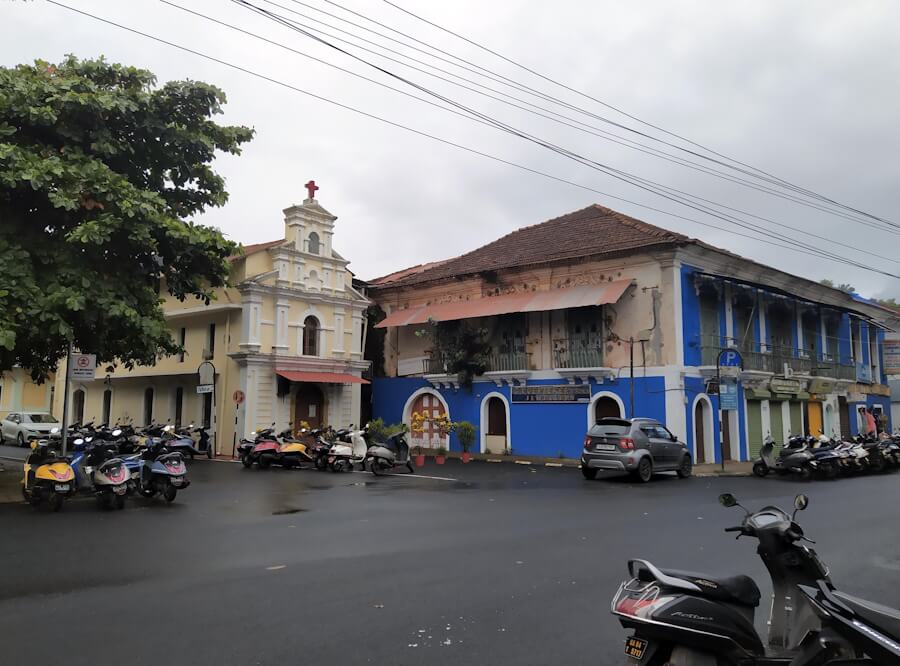
Photo: Wikimedia Commons
Guests in one’s home
One’s space overtaken by visitors and their daily disruptions, watching lush green environments and natural water bodies gradually replaced by buildings to accommodate tourists, has led to discomfort for residents across Goa besides Fontainhas and São Tomé. This was captured in a print and digital comic book titled The Uninvited Host: Goa and the Parties not Meant for its People by Professor R. Benedito Ferrão, who teaches at the College of William and Mary in the United States.
“Even though tourism is an employer in Goa, many of the key players are not. Many of them are not located in Goa. The profits don’t stay in Goa, and they don’t have the same investment as local people do in sustaining culture and environment,” Ferrão told the college news portal.[10]
Like others who told us in this essay last year[11] that Goa’s ecology and natural resources have suffered due to excessive construction to meet the demands of tourism, Ferrão avers that the infrastructure has been developed or over-developed for tourism rather than local good. Angela Ferrão, who illustrated the book, and he “have seen our communities grapple with being the ‘uninvited hosts’ to the tourism industry which indiscriminately uses resources and is not necessarily an economic benefit”. Tourism, he says, works in the colonial vein.
Tallulah D’Silva, architect and activist passionate about ecology, told Question of Cities that the streets of Fontainhas, which used to have prayers, are being overrun by uncouth tourists is one part; the other is that the precinct lies at the foot of a hillock which has natural streams and greens, and all this is under threat. The anger built up slowly. In 2022, residents held a press conference to verbalise their issues with overtourism including how commercial signages were blocking their homes.[12] The ‘Save Panjim Initiative’ challenged the ropeway project, waterfront construction on the Mandovi riverbed, and conversion of recreational public space into tourist facilities.[13]
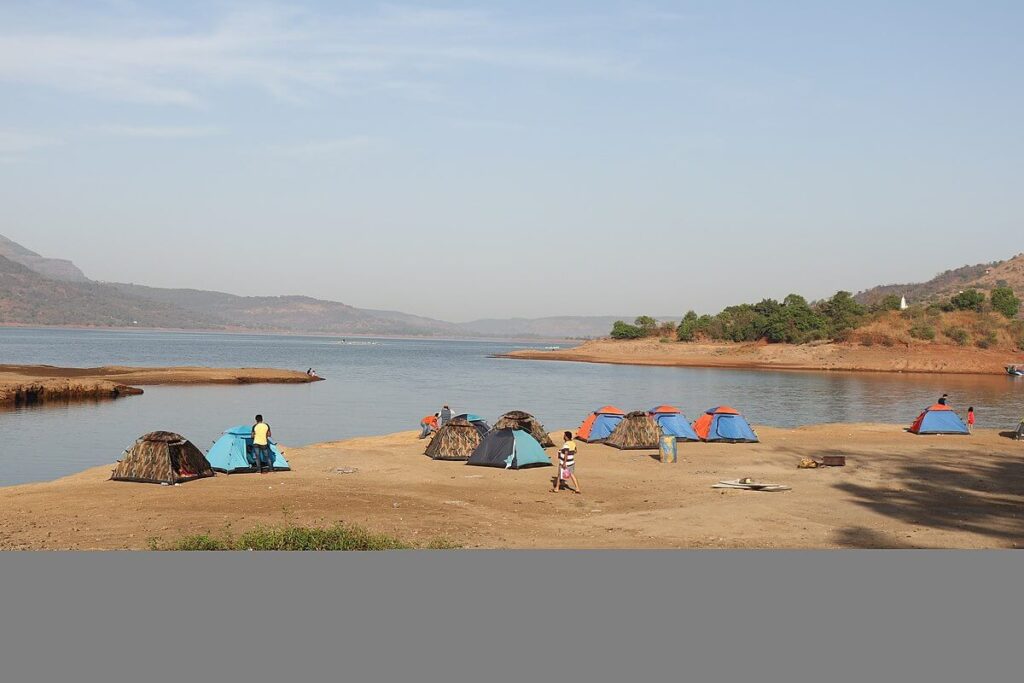
Photo: Wikimedia Commons
Other destinations too
Several tourist destinations are seeing similar pushback and, perhaps, a much-needed recalibration.
Shimla, among the most favoured hill stations in India, saw a remarkable official announcement this month – a staggering 15,000 vehicles had streamed in every day for two weeks though its capacity is only about 5,000. “The tourists, of course, suffer, stuck in jams for hours…The real and continuing price, however, is paid by the permanent residents of these once quiet, idyllic, British-era towns, who are practically imprisoned in their houses with no space left on the roads even for walking,” noted former bureaucrat and comment writer Avay Shukla in this piece.[14]
Other hill stations like Mussoorie, Manali, Nainital, and gateways to religious sites such as Dehradun, Joshimath, Hrishikesh have seen a similar trend of tourists crowding out locals and an upsurge in construction of hotels and roads. In Kasol, Himachal Pradesh, the construction boom in resorts and homestays has priced the locals out of land while causing deforestation and disruption of ecological balance.[15] One of the reasons for the explosion in tourist numbers has been the construction of highways and expressways in the hills. The Char Dham Road Project in Uttarakhand has been disastrous for the forests and biodiversity.[16]
The pushback in some places comes from the local governments. Lonavala, the popular destination near Mumbai and Pune, and its surrounding spots like Bhaje Waterfall, Lohagad Fort, and Pavana Lake have seen restrictions by the local administration.[17] The new prohibitory orders explicitly ban activities such as swimming in fast-flowing waters, sitting under waterfalls, or venturing to steep cliffs for selfies, photographs, or videos.[18]
In Wayanad, Kerala, the price for indiscriminate cutting of hillsides, to accommodate tourist facilities, was paid by locals over 400 of whom perished in the landslide last year.[19] The shrinking of Vembanad Lake, a Ramsar site and the backbone of Kerala’s backwater tourism, has locals worried.
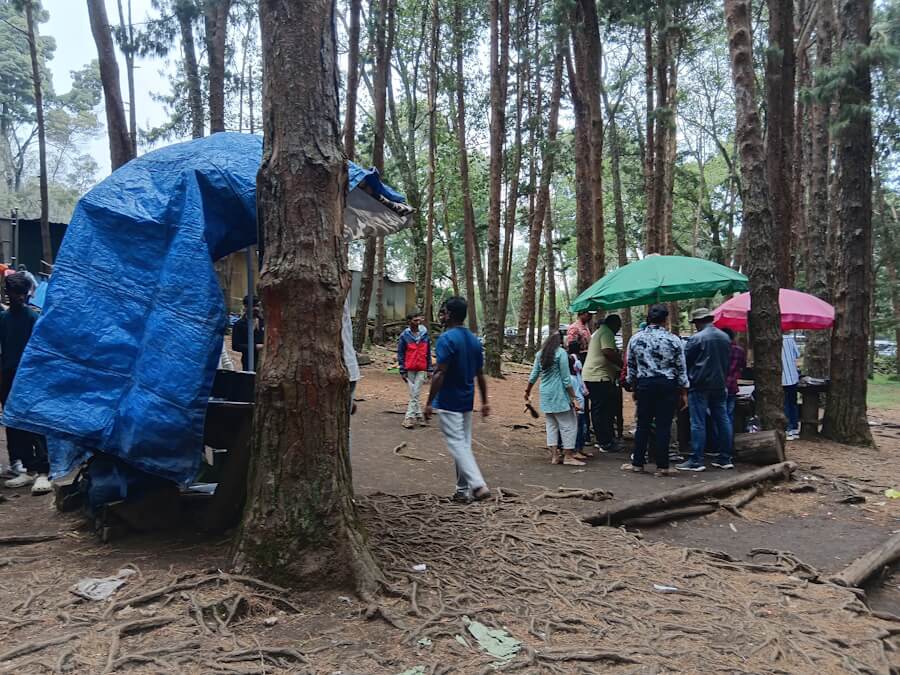
Photo: Nikeita Saraf
The hill town of Kodaikanal, Tamil Nadu, attracts lakhs of tourists every year but residents are quite fed up catering to them. In February this year, Dindigul district collector S Saravanan warned tourists against carrying single-use plastic up the hills and levied penalties on plastic bottles of less than 5-litre capacity.[20] Another pushback came from the courts. The Madras High Court ordered, in April this year, that 28 plastic items would be banned from the Western Ghats in Tamil Nadu.[21] Dealing with and disposing of enormous quantities of waste, especially plastic, has become the bane of residents in several tourist towns. A straightforward 10-minute ride in the ghats taking 30-40 minutes frustrates the locals in Kodaikanal.
In the popular destinations, while some like hotel and resort owners, taxi owners and drivers, souvenir shops, local food outlets and others clearly benefit from the tourist boom, the gains have not spread evenly. Besides, others who have little stake in the tourist economy have come under pressure to lease or sell their land, and become mute spectators as to tree-cutting and blocking of streams for more construction to facilitate tourism.
The pushback has not taken ugly forms as it did in Barcelona[22] – those protests targeted budget tourists rather than the better-off ones – but some tourist destinations in India too are seeing beyond the immediate profits from tourism to their economies. The pushback as local resistance is to be expected but there’s no saying what shape it will take in different places. It is, all said and done, a move by locals to reclaim their space, their home.
Cover Photo: Charles Correa Foundation

